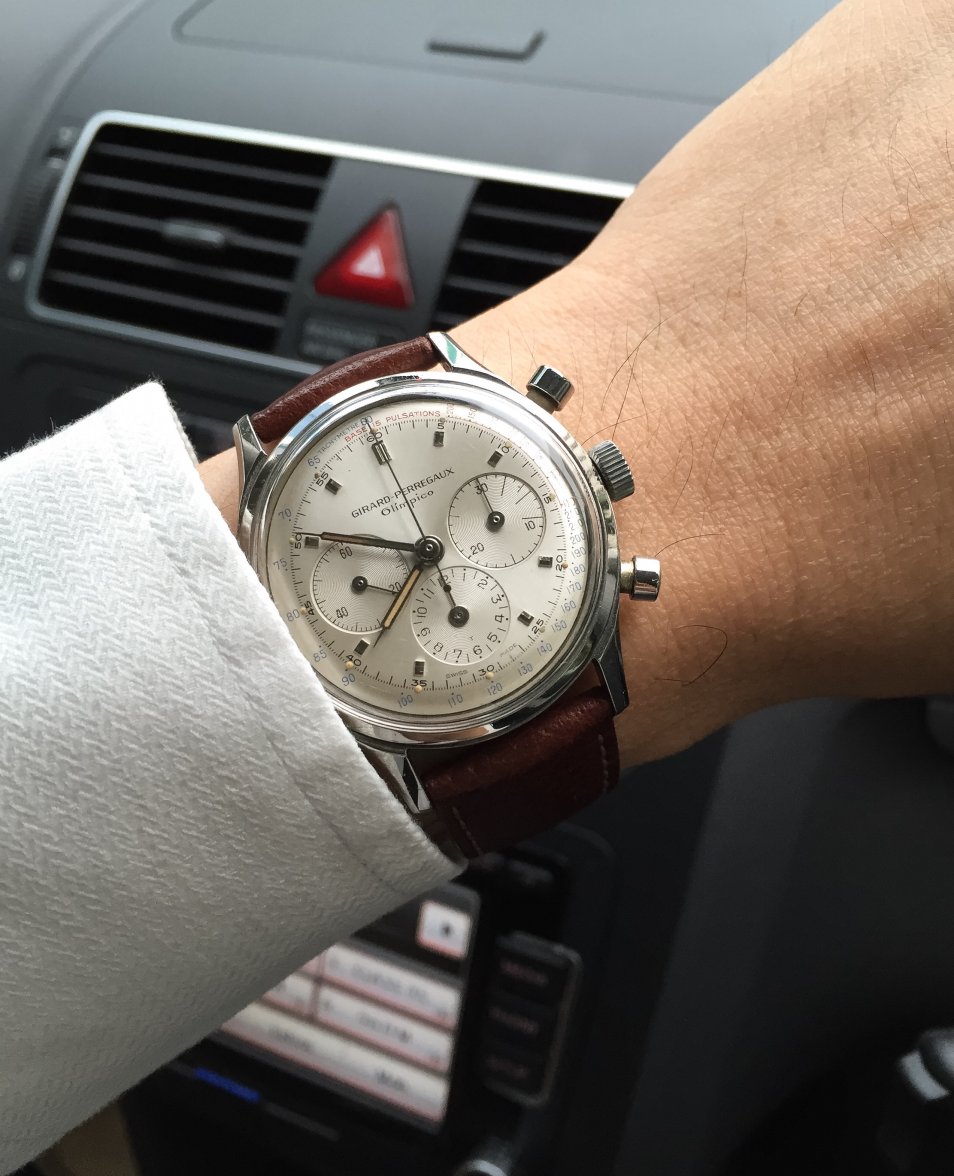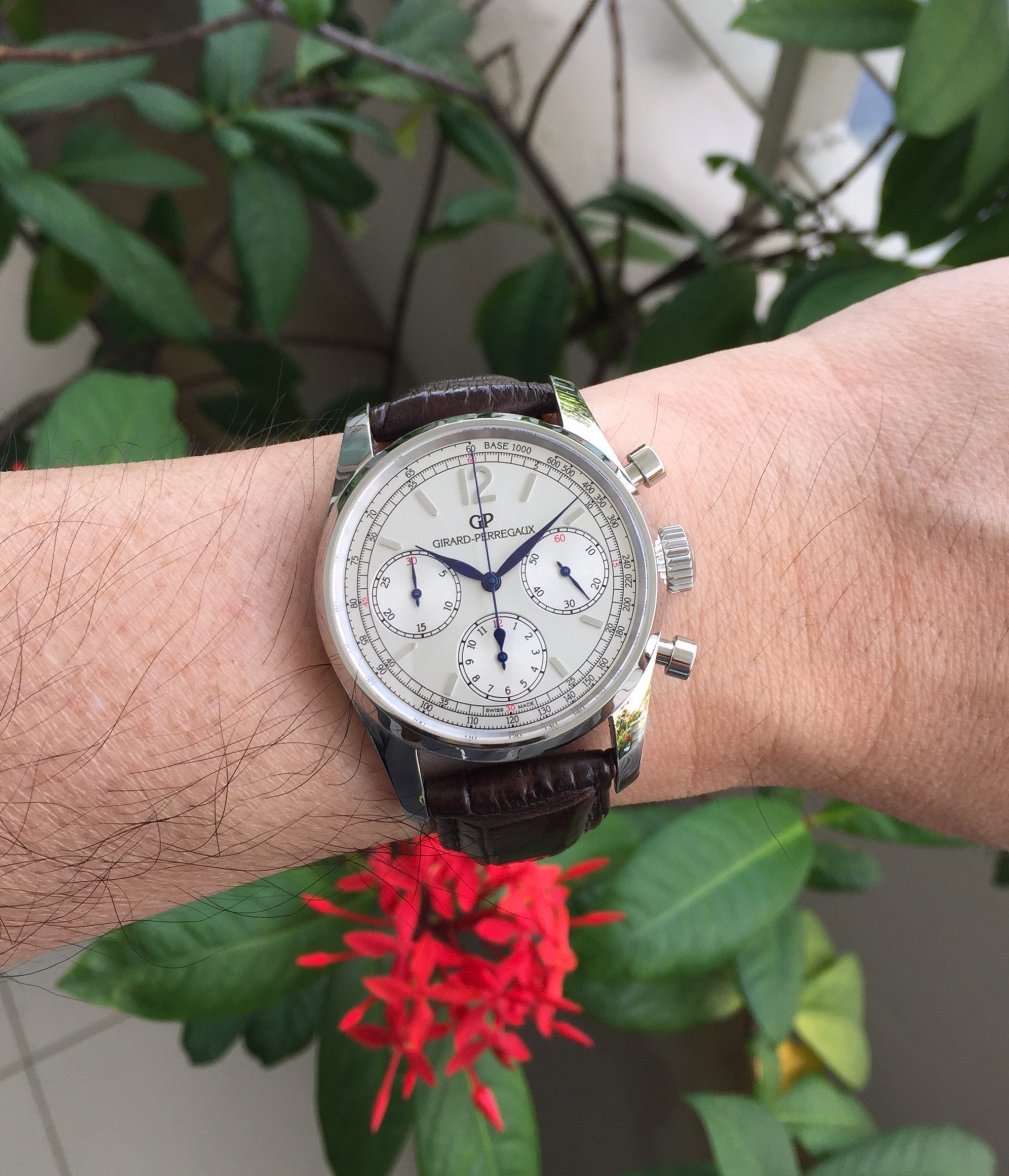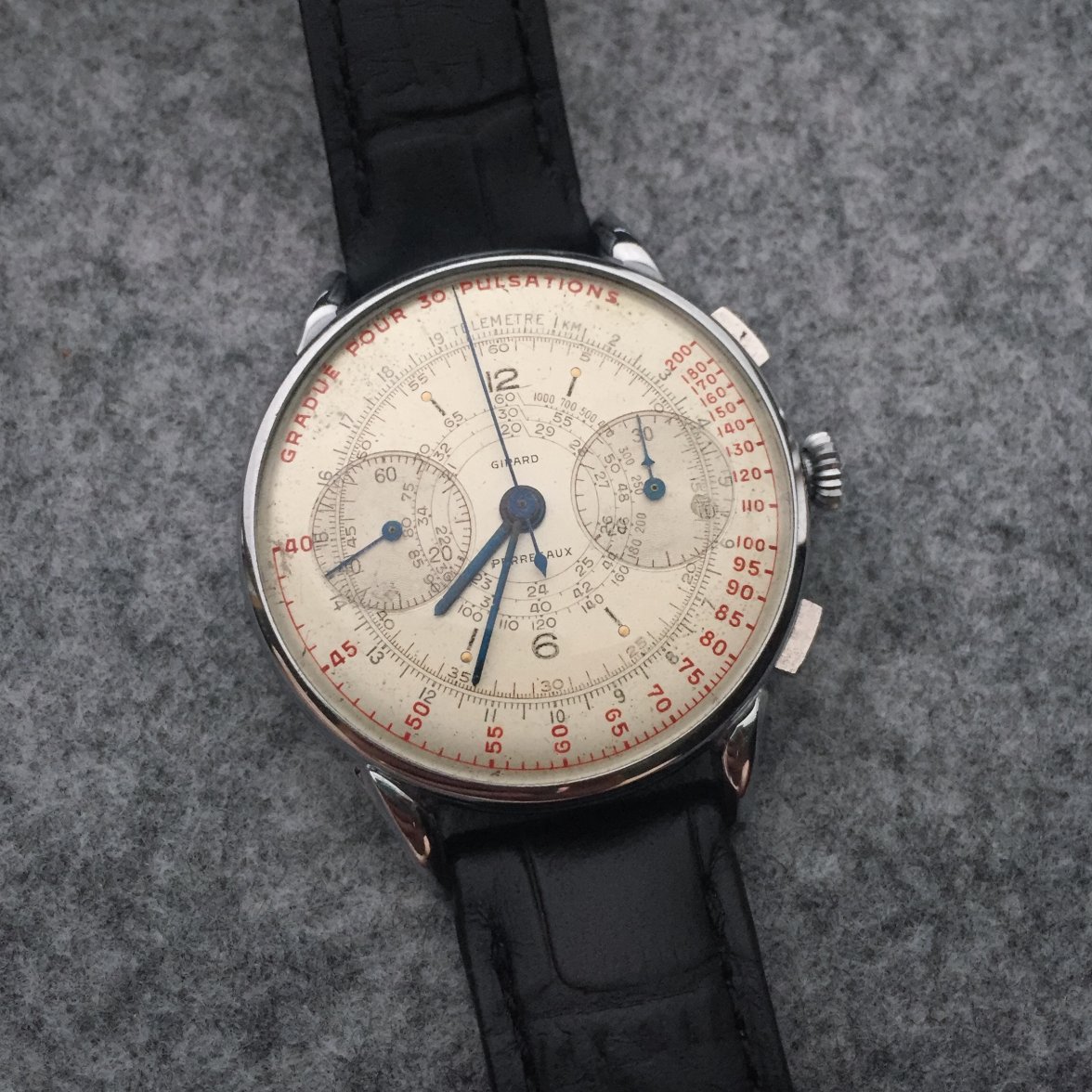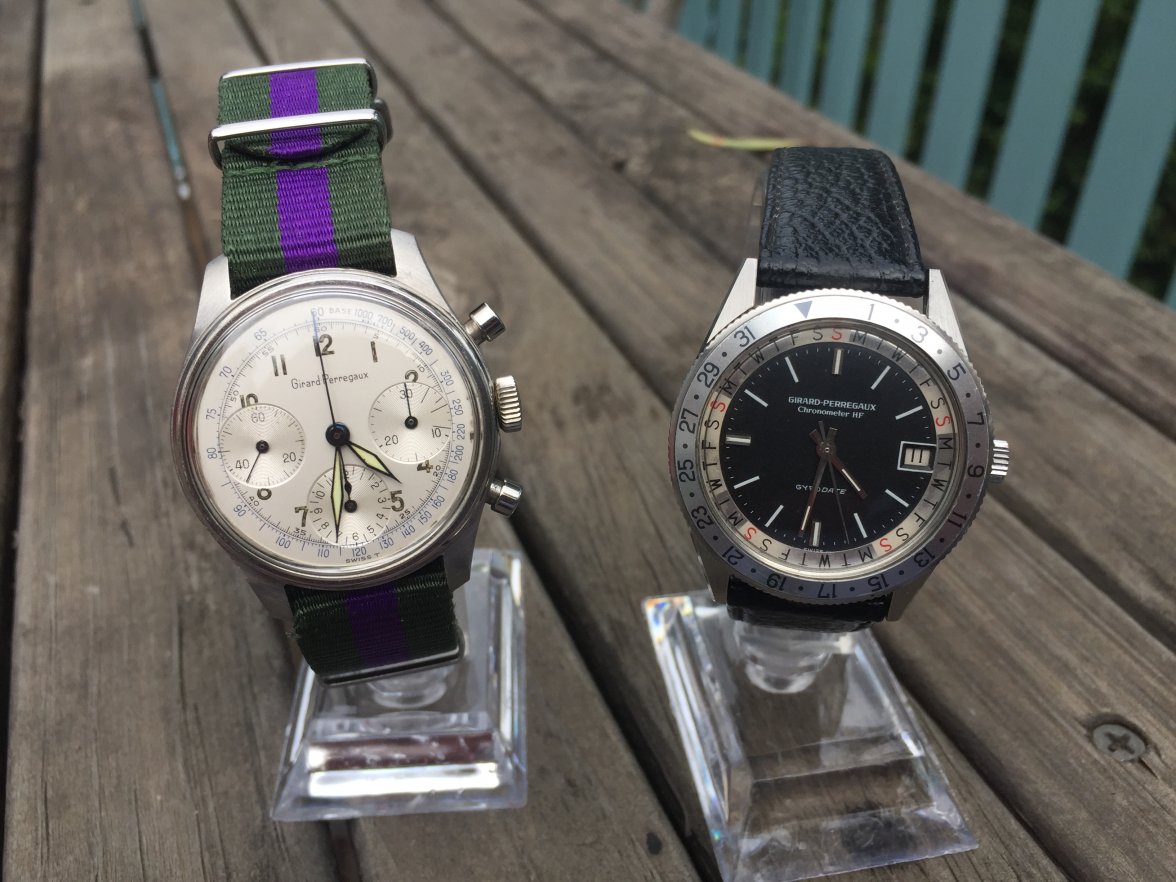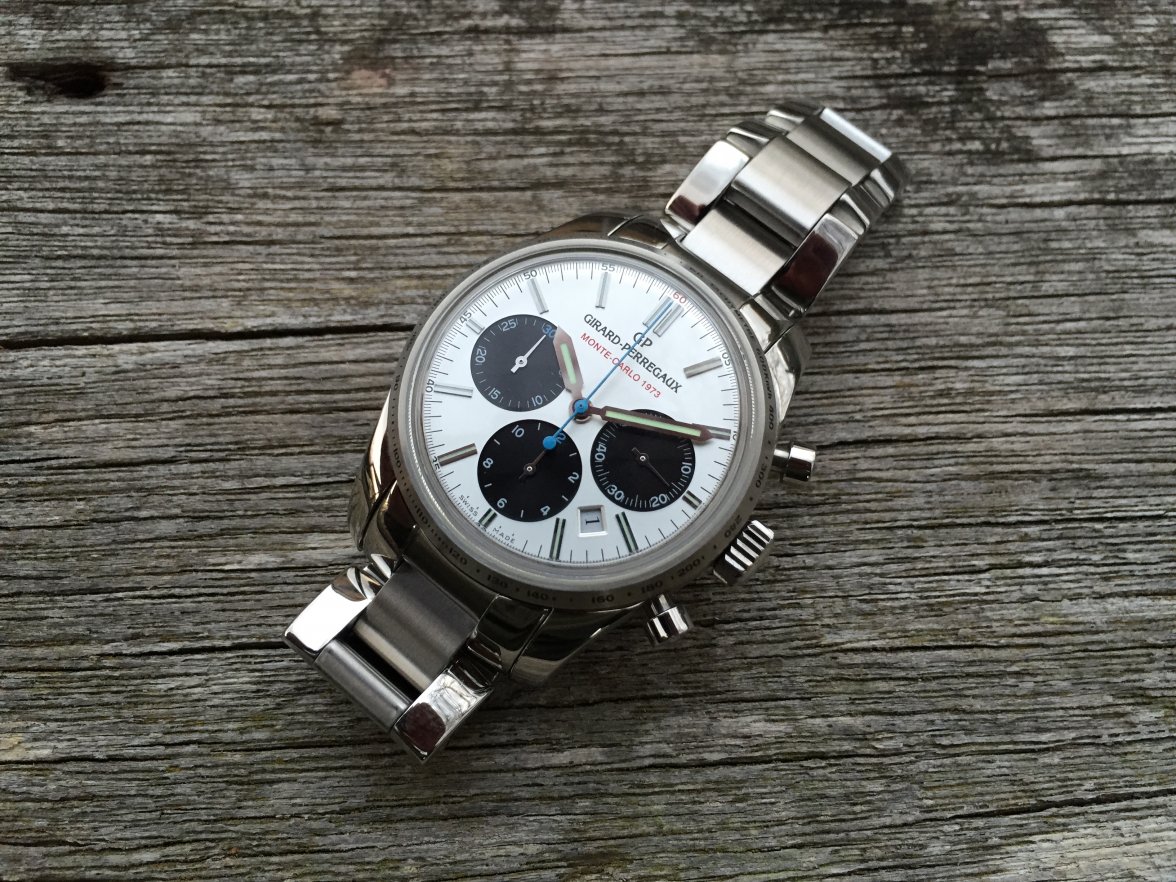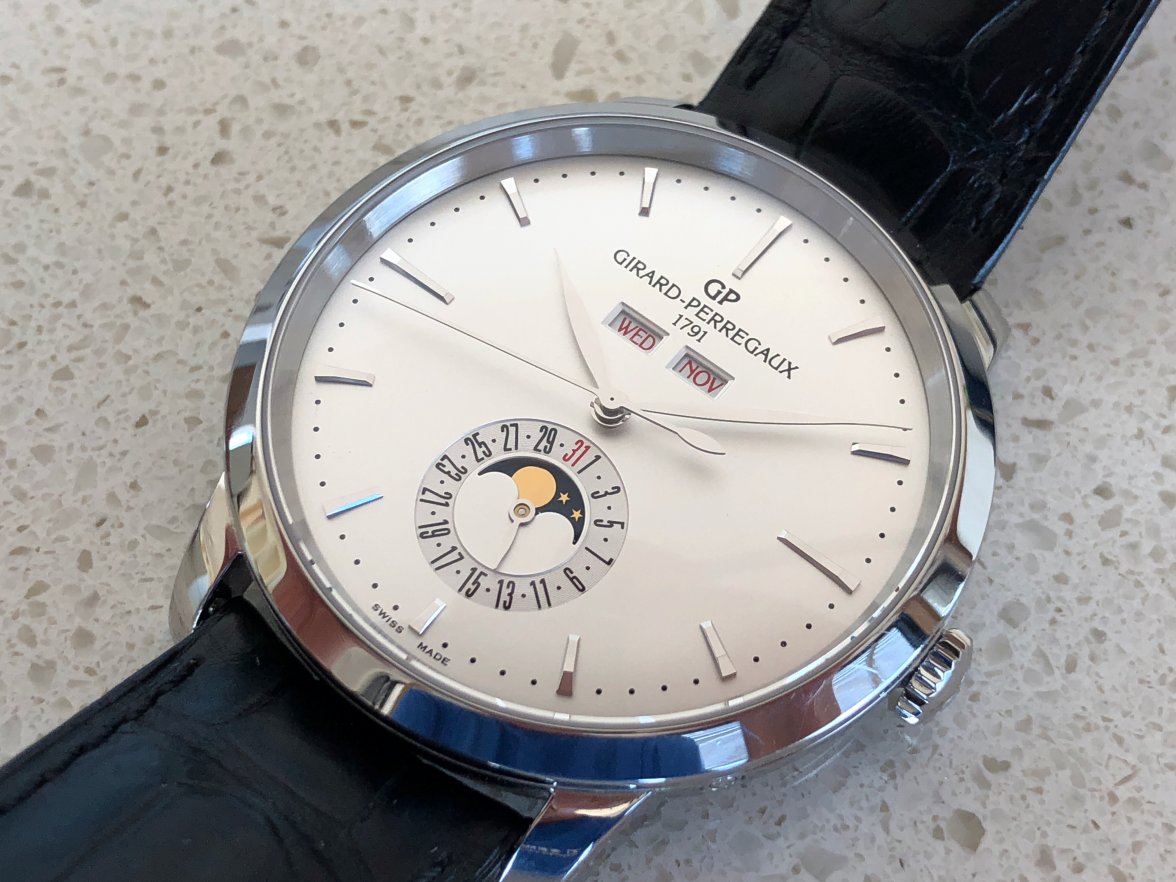Most Underrated High-End Brand - Girard Perregaux?
guaranteed.rohu
·Not sure what relevance this has for the watch being "high end" but that's okay...
I guess for them, 'high end' means highly accurate movements, going off the assumption that constructing highly accurate movements is far more difficult than constructing 'somewhat' accurate movements. all relative i guess, I have no background in watchmaking, but as an ex-mechanical engineer I can appreciate the accuracy
If well finished movements/complications is a mark of high end, then GP doesn't win there!
Archer
··Omega Qualified WatchmakerI guess for them, 'high end' means highly accurate movements, going off the assumption that constructing highly accurate movements is far more difficult than constructing 'somewhat' accurate movements. all relative i guess, I have no background in watchmaking, but as an ex-mechanical engineer I can appreciate the accuracy
If well finished movements/complications is a mark of high end, then GP doesn't win there!
I am also a mechanical engineer (you are never an ex-engineer, even if you are not in the engineering field anymore!), and it's actually not difficult to make an accurate movement. As I've noted above, any 7750 can be made to run very accurately, and the typical 7750 is very far from being a high end movement. Most modern ETA movements for example can be made to run well within the parameters that brands set out for COSC watches, even if they are not COSC rated movements.
I think the idea that what makes something high end is simply finishing is missing some important things. It's more about the details of construction for me, not simply the finishing of the movement. Simply adding decoration to a movement doesn't make it high end...you can put lipstick on a pig, and it's still a pig.
Cheers, Al
Tony C.
··Ωf Jury memberI am also a mechanical engineer (you are never an ex-engineer, even if you are not in the engineering field anymore!), and it's actually not difficult to make an accurate movement. As I've noted above, any 7750 can be made to run very accurately, and the typical 7750 is very far from being a high end movement. Most modern ETA movements for example can be made to run well within the parameters that brands set out for COSC watches, even if they are not COSC rated movements.
Cheers, Al
That's a bit of apples and oranges, Al. My initial comment related to movements made in the '60s. Furthermore, they were high-beat movements, which, at least in terms of potential accuracy, gave them an intrinsic advantage over many of their competitors. GP HF chronometers also performed exceptionally well in the Observatory trials.
So, while I appreciate that many movements have or had the potential to perform to chronometer standards, there was a meaningful distinction.
Archer
··Omega Qualified WatchmakerThat's a bit of apples and oranges, Al. My initial comment related to movements made in the '60s. Furthermore, they were high-beat movements, which, at least in terms of potential accuracy, gave them an intrinsic advantage over many of their competitors. GP HF chronometers also performed exceptionally well in the Observatory trials.
So, while I appreciate that many movements have or had the potential to perform to chronometer standards, there was a meaningful distinction.
Tony - respectfully - in the context of this thread I don't see what difference this accuracy argument you keep making has.
You have already stated you don't believe that they were a "high end" company previously...
"While I certainly agree that they were not a high-end company,"
I have never said that their movements were not accurate. I'm not looking to debate this topic with you mate...you can believe whatever you wish about the nature of vintage GP movements as I've already stated.
Cheers, Al
ConElPueblo
·I don't pretend to define what "high end" means to people - hence my use of quotes for that phrase. But the OP is comparing these to VC and AP - in that context the vintage movements were certainly not "high end" although they may have been accurate. If accuracy is the test for you, that's fine, but then a bog standard ETA 7750 would be "high end" and most people would not make that association.
Cheers, Al
I'm sure that if you had entered a 7750 into an Observatory trial at the time GP did well, it would have raised a few eyebrows 😁
NT931
·Wondering if there are any Girard Perregaux owners out there.
...
I own 3 GP's, coincidentally all chronos.
An Olimpico 8846
A modern 49480, given to Fiat employees (I think for 30 years of service?). I love the blued hands and the 38mm case
And a vintage 39mm one with blued hands and a pulsometer scale. It wears pretty well too.
All 3 have blue and red on the dial and/or hands, come to think of it!
In general, I don't know if they're high-end or not... I just know what I like wearing.
Edited:
Archer
··Omega Qualified WatchmakerIn terms of the modern watches, I've always like the Laureato Evo 3 moon phase with the white dial.
timjohn
·Tony C.
··Ωf Jury memberarcadelt
·François Pépin
·Nices watches in this thread!
Even if there habe been some debattes - or maybe misunderstandings - I am happy to see that "high end" discussions consider movements. I was surprised to see in other recent threads of this section of the forum that people tend to talk about "high end" watches or brands without considering the movements, or considering only very general aspects of them.
Obviously, there are several possible definitions of 'high end". And I think, a little bit like in art, that debattes about the definition of "high end" is part of "high end". But I do think that we should always consider watches as wholes, in particular with "high end" watches. And in that whole, the movement should be a very important aspect - in itself and in relation to the rest of the watch. Focusing on the external appearance of the watch is always possible, and can be relevant for many watches, but it does seem to me not to be fully relevant for "high end".
For instance, some recent calatravas could appear to be "less" "high end" that the former ones, though they still have a very elegant design. The movements are not as fine as they used to be, and putting a small movement et a much larger case can appear to be a "faute de goût".
Obviously, not anybody can look a movement with Archer's eyes! And I do not pretend to. But I am always happy to read Al, Dufour and many other people about the construction and finition of a fine movement. And I think it is good to educate ourselves about the design of movements, about ideas embodied in materials and forms, about how a part can be made to be exaclty what it should be, about the differences between hand made côtes de genèves and industrial ones... Anyone can have his idea about "high end", but we will certainly have a better perception and more enlightened debattes if we consider the fine quality of movements. And here in quality I include accuracy, but it cannot be a central parameter (chronometers can be high ends but are not per se "high end"). By quality I mean a global and difficult to define idea - maybe ellusive but interesting to discuss. I would say that, here, quality tends to get close to beauty: a nice movement is beautifull because it is what it should be, not because is has lipstick - I borrow Al's analogy!
Shall I dare to conclude our discussions wouldl be more interesting if, when talking about "high end", we made a large place to the quality of movements?
Even if there habe been some debattes - or maybe misunderstandings - I am happy to see that "high end" discussions consider movements. I was surprised to see in other recent threads of this section of the forum that people tend to talk about "high end" watches or brands without considering the movements, or considering only very general aspects of them.
Obviously, there are several possible definitions of 'high end". And I think, a little bit like in art, that debattes about the definition of "high end" is part of "high end". But I do think that we should always consider watches as wholes, in particular with "high end" watches. And in that whole, the movement should be a very important aspect - in itself and in relation to the rest of the watch. Focusing on the external appearance of the watch is always possible, and can be relevant for many watches, but it does seem to me not to be fully relevant for "high end".
For instance, some recent calatravas could appear to be "less" "high end" that the former ones, though they still have a very elegant design. The movements are not as fine as they used to be, and putting a small movement et a much larger case can appear to be a "faute de goût".
Obviously, not anybody can look a movement with Archer's eyes! And I do not pretend to. But I am always happy to read Al, Dufour and many other people about the construction and finition of a fine movement. And I think it is good to educate ourselves about the design of movements, about ideas embodied in materials and forms, about how a part can be made to be exaclty what it should be, about the differences between hand made côtes de genèves and industrial ones... Anyone can have his idea about "high end", but we will certainly have a better perception and more enlightened debattes if we consider the fine quality of movements. And here in quality I include accuracy, but it cannot be a central parameter (chronometers can be high ends but are not per se "high end"). By quality I mean a global and difficult to define idea - maybe ellusive but interesting to discuss. I would say that, here, quality tends to get close to beauty: a nice movement is beautifull because it is what it should be, not because is has lipstick - I borrow Al's analogy!
Shall I dare to conclude our discussions wouldl be more interesting if, when talking about "high end", we made a large place to the quality of movements?
Deafboy
··His Holiness Puer SurdusGP came out with a really interesting design a few years ago that deals with an "issue" with watches: that the balance wheel amplitude drops when the mainspring unwinds. This leads to a loss of accuracy in timekeeping if the watch is not isochronous. GP's solution was to uncouple the mainspring from directly powering the balance wheel by using a constant force escapement. This novel design (if not innovative) was clever and used a high-tech silicon component for the escapement spring. The watch had a 144 hour reserve (!), was quite large (48 mm -!!) and definitely up there in terms of pricing (100 k$ -!!!). The watches was commercialized in 2013 but I don't see them marketed now, so either there were either technical issues with the technology or the the watch didn't enamor the buyer (say as with a tourbillon).
tzachi
·GP, JLC both underrated, IMO
cholack
·Just my opinion but they are positioned as mid-tiered. While they have manufacture movements, the design of the movements are mismatched with the dimensions of the dial, hence on some chronographs the subdial placement are not ideal.
Anyways, I have love for the brand, this vintage piece with EP4 movement, applied indexes, sunburst dial and syringe hands
Anyways, I have love for the brand, this vintage piece with EP4 movement, applied indexes, sunburst dial and syringe hands
arcadelt
·While they have manufacture movements, the design of the movements are mismatched with the dimensions of the dial, hence on some chronographs the subdial placement are not ideal.
I would argue this is a modern affliction as a result of watches having become larger in comparison to the movements inside. While some companies have the resources to make their movements in a range of sizes, others do not. That said, there seem to be quite a few movements which force the sub dials (and other complications) to sit closer to the centre of the dial.
arcadelt
·Millenary Watches
·Agree with you. GP has stepped up their products and leaned more towards exclusive luxury in recent years, and they are in my opinion one of the most underrated high end luxury watches today. Certainly deserve more recognition in my opinion.👍
Archer
··Omega Qualified WatchmakerGP's solution was to uncouple the mainspring from directly powering the balance wheel by using a constant force escapement.
Just caught this post - although it's a new/different way of doing it, this appears to be a type of Remontoire. The concept has been around for hundreds of years.
Similar threads
- Posts
- 39
- Views
- 26K
